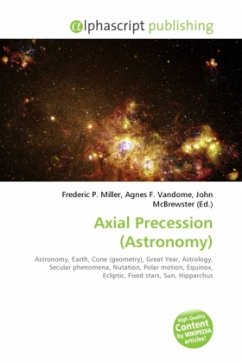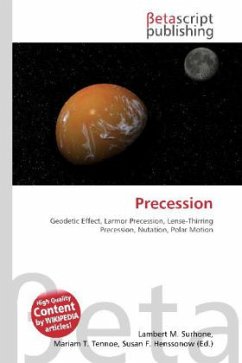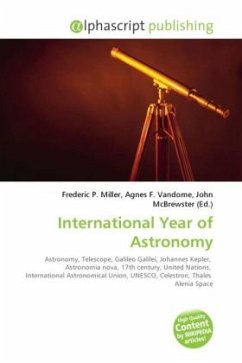
Axial Precession (Astronomy)
Versandkostenfrei!
Versandfertig in 6-10 Tagen
39,99 €
inkl. MwSt.

PAYBACK Punkte
20 °P sammeln!
In astronomy, axial precession is a gravity-induced, slow and continuous change in the orientation of an astronomical body's rotational axis. In particular, it refers to the gradual shift in the orientation of Earth's axis of rotation, which, like a wobbling top, traces out a cone in a cycle of approximately 26,000 years (called a Great or Platonic year in astrology). The term "precession" typically refers only to this largest secular motion; other changes in the alignment of Earth's axis nutation and polar motion are much smaller in magnitude. Earth's precession was historically called preces...
In astronomy, axial precession is a gravity-induced, slow and continuous change in the orientation of an astronomical body's rotational axis. In particular, it refers to the gradual shift in the orientation of Earth's axis of rotation, which, like a wobbling top, traces out a cone in a cycle of approximately 26,000 years (called a Great or Platonic year in astrology). The term "precession" typically refers only to this largest secular motion; other changes in the alignment of Earth's axis nutation and polar motion are much smaller in magnitude. Earth's precession was historically called precession of the equinoxes because the equinoxes moved westward along the ecliptic relative to the fixed stars, opposite to the motion of the Sun along the ecliptic. This term is still used in non-technical discussions, that is, when detailed mathematics are absent. Historically, Hipparchus is credited with discovering precession of the equinoxes. The exact dates of his life are not known, but astronomical observations attributed to him by Ptolemy date from 147 BC to 127 BC.












